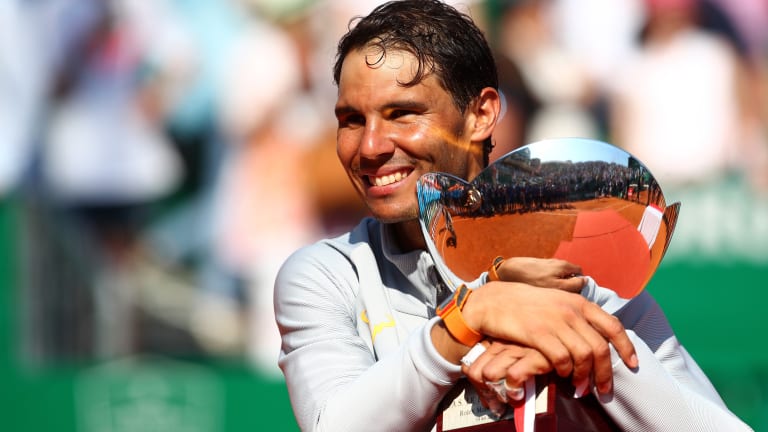10 Matches That Made Rafa the King of Clay
The 10 Matches That Made Rafael Nadal the King of Clay: Our countdown begins
By Apr 16, 202310 Matches That Made Rafa the King of Clay
No. 10, 2022: Nadal wins his 14th Roland Garros—and finally feels the crowd love in Paris
By Apr 27, 202310 Matches That Made Rafa the King of Clay
No. 9, 2013: Nadal and Djokovic led each other to a summit in staggering French Open semifinal
By Apr 26, 202310 Matches That Made Rafa the King of Clay
No. 8, 2012: Nadal wins record seventh Roland Garros by ending seven-match losing streak to Djokovic
By Apr 25, 202310 Matches That Made Rafa the King of Clay
No. 7, 2011: Nadal ends a difficult match with del Potro, as well as a trying season, with Davis Cup glory
By Apr 24, 202310 Matches That Made Rafa the King of Clay
No. 6, 2009: A "death in the afternoon" for Nadal, who edges Djokovic three-set Madrid marathon
By Apr 21, 202310 Matches That Made Rafa the King of Clay
No. 5, 2006: Nadal refuses to lose in five-hour, five-setter against Federer in Rome
By Apr 21, 202310 Matches That Made Rafa the King of Clay
No. 4, 2005: Rafael Nadal and Roger Federer bring their burgeoning rivalry to clay
By Apr 19, 202310 Matches That Made Rafa the King of Clay
No. 3, 2005: Nadal takes the next step, and puts on his big-boy piratas, in Coria epic in Rome
By Apr 18, 202310 Matches That Made Rafa the King of Clay
No. 2, 2004: Nadal heeds Moya's words, tops Roddick in raucous Davis Cup final
By Apr 17, 202310 Matches That Made Rafa the King of Clay
The 10 Matches That Made Rafael Nadal the King of Clay: Our countdown begins
First up—an energetic 16-year-old unveils his signature relentless style to the tennis world in Monte Carlo, against the reigning Roland Garros champion.
Published Apr 16, 2023
Advertising
Advertising

King in training.
© Getty Images
Advertising

A day earlier, the southpaw won the first Masters-level match of his career, against Karol Kucera.
© Getty Images
Advertising
Advertising

Nadal announced himself to the tennis world in Monte Carlo, and he would go on to win the tournament an astounding 11 times.
© 2018 Getty Images